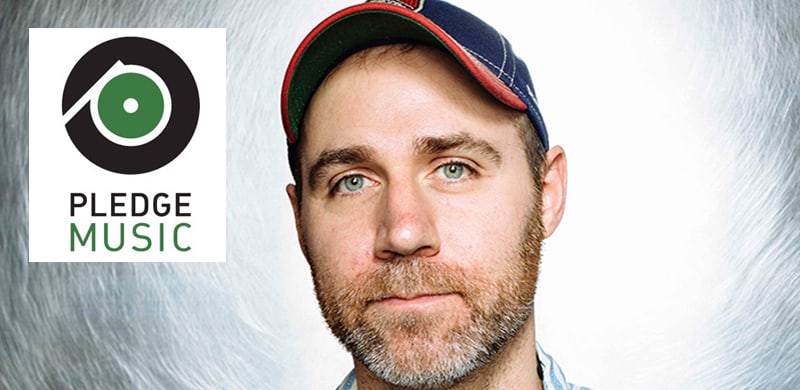INDUSTRY UPDATE: Ignore Super Fans at Your Own Risk; Benji Rogers Tells You How to Give Them What They Want.

BENJI ROGERS
Favorite App:
Reeder
Morning Routine:
(what do you do before you leave for work to prepare for the day):
Coffee – Chemex Pour Over
Favorite Book/Recommended Book:
The Marriage Of Cadmus & Harmony by Roberto Callasso
Current Favorite Song/Album:
Royal Blood by Royal Blood
According to Rogers, artists of all kinds – both independent and major label – are leaving untold amounts of money on the table and they don’t even know it. The reason? A lack of fan differentiation. Simply put, not all fans are created equal and knowing the difference could make or break an artist’s career.
You’re passionate about fan differentiation and specifically about artist reaching their super fans. What exactly is meant by the term “super fan”?
According to Nielsen there are six different types of fans. There are digital fans, casual fans, big-box retail fans, passive fans and so on. One of those segments, responsible for buying 34 percent of all music, can be classified as aficionados or super fans. By definition, these are fans that want to go deeper and get more from the experience of consuming music. They are still men and women who will stream music on a streaming service and listen on YouTube, but they will also reach into their wallets and spend more, if there is more for them to spend, and in particular, if there is an experience attached to it.
This segment of the music buying public, even though it might only be 34 percent, is responsible for 61 percent of all money spent on music, according to a recent MIDiA study that Mark Mulligan wrote a great column about. What they buy are experiences or offers. They follow a band from album to album, so they’re not just fly by night.
A super fan may be older now, so they might not get out to all of the concerts, but they still want the experience. They will still pre-order an album. They want to buy vinyl. They want to buy a CD. They might want to have the interaction. They’ll still stream and do all the things that the casual fan will do, but the difference is, if you unlock their spending potential, they will show up. If you give them a survey asking them what their favorite song is, they will tell you. If you send them a poll about the color of vinyl they’d prefer, they will vote on that. PledgeMusic’s fan base is a massive super fan community.
What happens if a super fan is ignored?
I’m a super fan of music. I get upset if an artist does an ad that I don’t like. It’s not that I consciously do it, but rather it’s just something underneath. It’s a bond I have with that artist even though I’ve never met them before. There are certain artists that no matter what they do, I will buy it if I can. But what I’ve found increasingly is if there is no super fan experience to be had, not only can they not spend, but they’ll also become the passive consumer types who will just stream a song. If they’re not given a way to show their love, they’ll simply move on.
Super fans are the ones with a deep connection to the artist. They’re the ones who go to the show to see the band play, not just to see who is playing like there are five bands on the bill. They’re not the ones going to a festival because it’s cheaper to see 20 bands than it is to see one. They want to go see their band, show up early, buy the t-shirt, buy multiple items and tell their friends they were there. Nielsen says it best that aficionados dig deeper.
How do you learn where your super fans are?
Artists need to stop sending their data to someone else. If you send your fans elsewhere, not only do you lose control of them, like if you send them to iTunes or Spotify first, but you also can’t have that connection because you don’t know where to reach them. Whether someone uses Pledge or their own mailing list or something else, you should do whatever you can to control your own data.
So much of an artist’s energy is about reaching those places where others control the data. Does that mean they’re focusing on the wrong fans?
If you sever the bonds between you and your fans, it’s not their fault. It’s yours. They’re fiercely loyal, but they can also have their heart broken. They’re just not casual in their choices. They will still behave in a casual manner if that’s all they have, but what you don’t want to do is mix the two.
The casual fan is someone who doesn’t really care where the music comes from. They just listen to the song and move on to the next one when it comes in and out. They will pay a certain amount for a musical experience, but they’re not really so interested. They might buy a CD or might not. They might look for the best deal they can get, whereas for the super fan, their life depends on getting that one thing. The casual fan can take it or leave it, or can wait to listen on Spotify later on.
If you look at the spending ratio, you want more super fans to be involved than you want casual fans, because you need seven times the number of casual fans to equal what the super fan will do.
But reaching a super fan takes more work and imagination, right?
No, it’s actually the other way around. It takes more imagination to reach the casual fan because they are the ones who will hop around from flower to flower. They don’t care which one they land on. What’s funny is that if you’re a singer-songwriter playing a show, the men and women in the front row, the ones cheering the loudest, all you have to do is give them something to do. The ones in the back who got the free ticket who don’t really care, they can take it or leave it. Yet artists often focus back there.
If you were to say to a 1,000 super fans to get involved in the making of your album and they all jump on, they’ll all get on for the ride of their life. That part is easy. If you say to them to go to Spotify, they’ll do that, too. But which is better? The average transaction at PledgeMusic is $61. Is it better to send those super fans to Pledge and grab that $61 or is it better to earn the streaming revenue from those 1,000 going to Spotify.
They can do both, of course, but you have to give the super fan the ability to do something more than the casual fan. One of our staff members, Nicole, is a massive Beyoncé fan. The maximum she could give Beyoncé for her last album was $12.99 when the new album came out. A whole bunch of casual fans also spent $12.99, but so did she. That’s an earth-shattering amount of money left on the table because the super fan cannot express their appreciation any more than that $12.99 figure.
##




